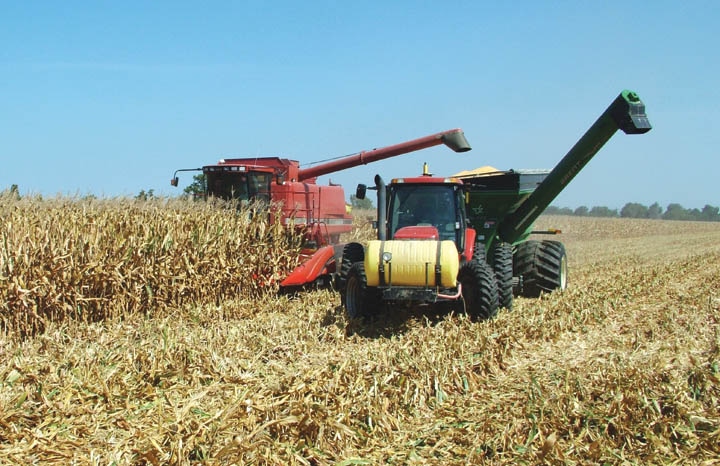
Countering climate change and future corn yields
The impacts of climate change on corn yields in the United States and China in coming decades may not be all bad, according to a new Cornell and University of Tokyo study published in a recent issue of the journal Agricultural Systems.With this more complete picture, the researchers found that by 2030, maize yields may not decline as much as climate-only models predict, and that yields may increase greatly in some scenarios in both China and the United States.
March 1, 2011

The impacts of climate change on corn yields in the United States and China in coming decades may not be all bad, according to a new Cornell and University of Tokyo study published in a recent issue of the journal Agricultural Systems.
Most studies looking at the impacts of climate change on agriculture use computer models based on climatic, soils and cultivar variables, but the model used in this study also incorporates future technological advancements and economic considerations.
More complete picture
With this more complete picture, the researchers found that by 2030, maize yields may not decline as much as climate-only models predict, and that yields may increase greatly in some scenarios in both China and the United States.
"The impacts of climate change are not going to uniformly be the same everywhere, there will be winners and losers," said Harry Kaiser, Cornell professor of applied economics and management and one of the paper's co-authors.
For example, warm weather continents like Africa and South America could bear more negative impacts from climate changes this century if temperatures rise and precipitation declines, while Canada stands to gain from warming temperatures, Kaiser said. "But if we knock down trade barriers, losses may offset gains elsewhere through trade," he added.
With China and the United States accounting for 50 percent of the world's maize production, the researchers focused their study on key growing areas in eight Midwestern U.S. states and five Middle China provinces. Also, climate models predict temperature more accurately than precipitation shifts. For this reason, the researchers examined scenarios that included extreme precipitation increases and decreases for each location.
The computer model used in the study included climate, soil, cultivar, technological and economic variables. Technological variables accounted for such factors as research to develop new cultivars with higher yields that are more tolerant to stressors like drought, and new varieties that might be better suited to a longer growing season, an expected outcome in North America in coming decades.
Using an extreme scenario with a global temperature rise of 1.46 degrees Celsius (2.6 F) from 2000 levels, the model predicted that by 2030:
In Middle China, if precipitation increases by 30 percent, maize yields would increase by 23 percent, but if precipitation decreases by 30 percent, maize yields only increase by 11 percent. In the summer in this part of China, higher temperatures can increase evaporation rates, making maize yields sensitive to water deficiency.
In the U.S. Midwest, if precipitation increases by 30 percent, maize yields would drop by 7 percent, but if precipitation declines by 30 percent, maize yields could increase by 42 percent. That's because the Midwestern states studied already receive adequate rainfall and more rain is likely to waterlog roots.
Still, the researchers argue that a decrease in maize yields would lead to increased maize prices, which in turn would induce farmers to add more investments in production inputs to raise yields.
"The decrease in actual yields may not be as dramatic as predicted in cases where only climate factors are considered," Kaiser said.
Xiang Li, a researcher at the University of Tokyo, is the paper's lead author.
You May Also Like



